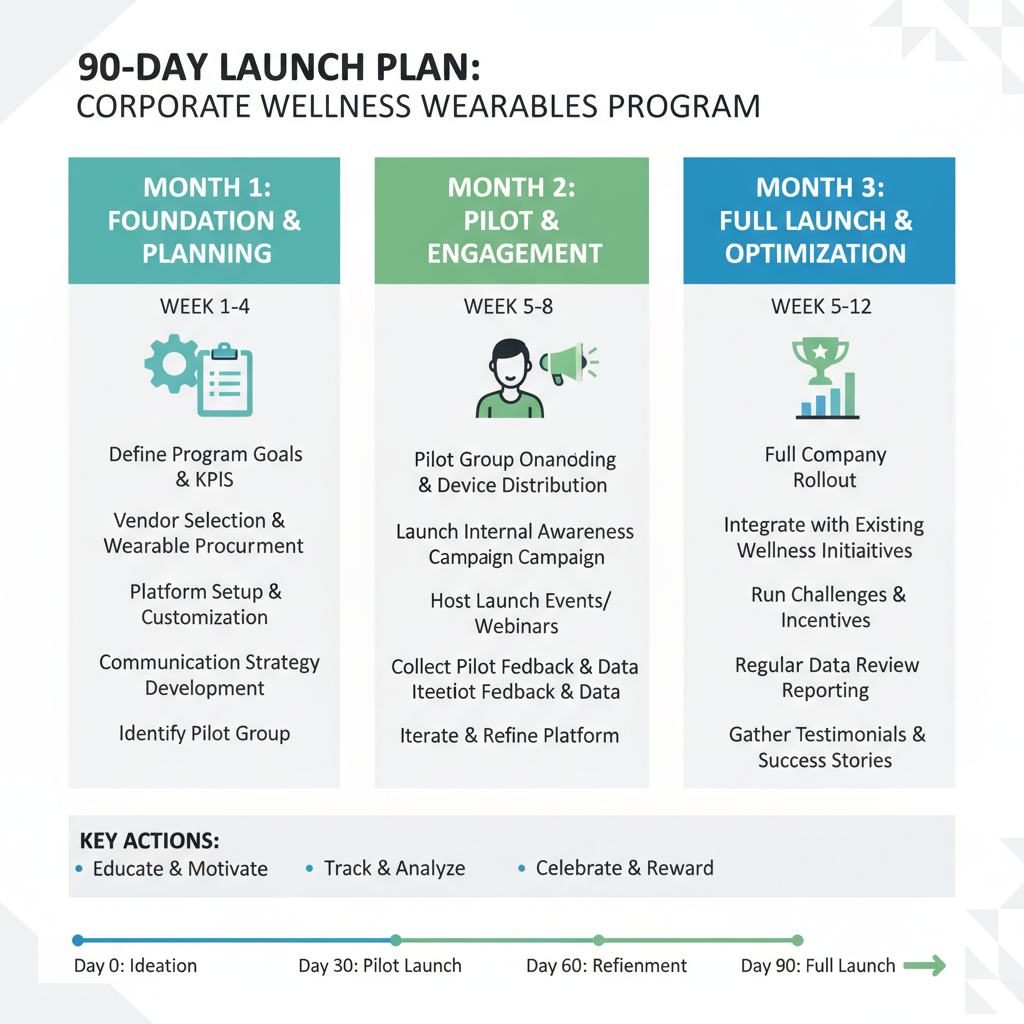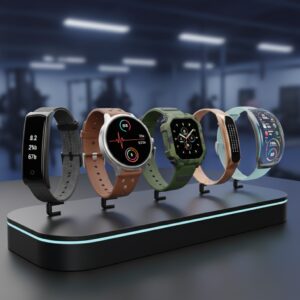
Employee wellness is no longer a perk—it’s a strategic imperative. In 2025, companies are turning to wearable technology to drive engagement, prevent burnout, and foster a culture of health. But launching a corporate wellness wearables program can feel overwhelming. Where do you start? How do you pick the right devices? What about privacy, incentives, and measuring ROI?
Why Wearables Are the Future of Employee Wellness
Wearables are no longer just step counters. Today’s devices—like Fitbit Charge 6, Apple Watch Series 9, and Garmin Venu 3—offer real-time health monitoring, stress tracking, sleep analysis, and even AI-driven insights. According to the U.S. smart wearables market forecast, the sector is set to grow from $26.53 billion in 2025 to over $132 billion by 2034. The HHS is even launching a national campaign to encourage Americans to adopt wearables, signaling a cultural shift toward proactive health management.
Phase 1: Weeks 1–4 – Laying the Foundation
Define Your Goals and Budget
Start by clarifying your program’s objectives. Are you aiming to reduce absenteeism, boost engagement, or lower healthcare costs? Set clear KPIs—such as participation rates, step count increases, or stress reduction metrics. Allocate a budget for devices, platform subscriptions, and incentives. For example, a basic Fitbit Charge 6 retails for $149.95, while Apple Watch Series 9 starts at $399. For a pilot group of 25 employees, expect to spend $3,750–$10,000 on devices alone.

Select Your Wearables and Platform
Choose devices that integrate seamlessly with wellness platforms. Top options include:
- Fitbit Charge 6 – $149.95, integrates with WellSteps, Wellness360, and Vantage Fit
- Apple Watch Series 9 – $399+, integrates with Apple Health, MoveSpring, and Reward Gateway
- Garmin Venu 3 – $449.99, integrates with Garmin Connect, Wellness360, and Vantage Fit
Pair devices with a corporate wellness platform. WellSteps offers flexible programming and rewards, while Wellness360 provides 200+ integrations and branded merchandise. Vantage Fit excels in activity tracking and health risk assessments. Subscription costs range from $100/month for 25 users (Wellness360) to $4,500/year for 100 employees (Vantage Fit).
Phase 2: Weeks 5–8 – Pilot Launch and Communication
Recruit Your Pilot Group
Select a diverse group of 25–50 employees to test the program. Offer incentives for participation, such as gift cards, extra PTO, or branded swag. Use peer-to-peer recognition tools (like those in Reward Gateway) to foster excitement and social proof.
Communicate the Vision
Launch a multi-channel campaign—email, intranet, and team meetings—to explain the program’s benefits. Emphasize flexibility, privacy, and fun. Share testimonials from early adopters and highlight how wearables can help employees feel better, not just track data.
Set Up Privacy and Compliance
Ensure your program complies with privacy regulations. Use platforms that anonymize data and allow employees to opt out of sharing sensitive information. Clearly communicate your data policy and obtain consent. Platforms like Wellness360 and Vantage Fit offer robust privacy controls and clinical event verification.

Phase 3: Weeks 9–12 – Measure, Optimize, and Scale
Track Participation and Engagement
Monitor key metrics: device adoption, challenge completion, and user feedback. Use real-time pulse surveys (offered by Wellness360) to gather insights. Look for trends—such as increased step counts or reduced stress levels—and adjust your approach accordingly.
Optimize Incentives and Challenges
Introduce gamified challenges and rewards to boost engagement. For example, run a 2-week step competition with prizes for top performers. Platforms like YuMuuv and Reward Gateway make it easy to create customizable challenges and recognize achievements.
Scale to the Entire Organization
Based on pilot results, refine your program and roll it out company-wide. Expand your device and platform choices to accommodate different preferences and budgets. Consider offering a mix of wearables (Fitbit, Apple, Garmin) and wellness platforms (WellSteps, Wellness360, Vantage Fit) to maximize participation.
Expert Tips and Recommendations
- Start small and validate early—pilot programs help you identify issues before scaling.
- Choose platforms with strong integrations and user-friendly interfaces.
- Focus on actionable insights and personalized recommendations to keep employees engaged.
- Leverage social features and peer recognition to build a culture of wellness.
- Regularly update your program with new challenges, content, and incentives.
Conclusion: Your Path to a Healthier, Happier Workforce
Launching a corporate wellness wearables program is a powerful way to support your employees’ health and drive business results. By following this 90-day roadmap, you can design, pilot, measure, and scale a program that meets your unique needs and aligns with 2025 trends. The time to act is now—don’t miss the opportunity to transform your workplace culture and set your company apart as a leader in employee wellness.

Ready to get started? Download our free 90-day launch checklist and vendor comparison guide to kick off your program today!


